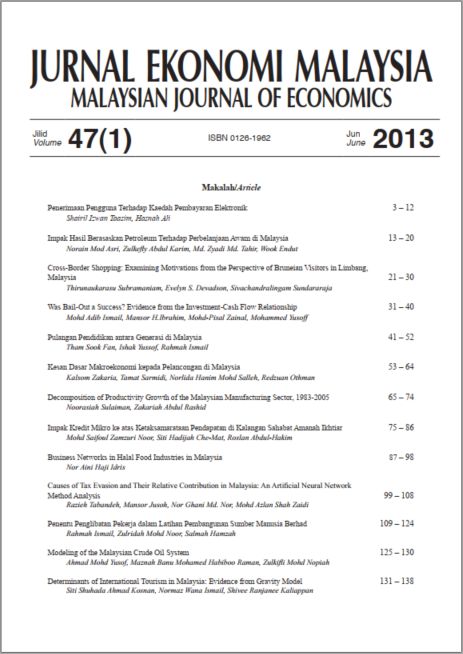Jurnal Ekonomi Malaysia
47 (1) 2013 139 – 154
Abstract
The main objective of this paper is to provide a measure of fiscal capacity and fiscal effort of the state governments in
Malaysia by using the approach originally proposed by the now defunct U.S. Advisory Commission on Intergovernmental Relations (ACIR) – the representative revenue approach (RRS). However, the study is limited to the analysis of land tax. The results indicate that state governments differ significantly in terms of their tax capacity, as well as their tax effort. The states of Pahang, Perak and Terengganu are found to have above average land tax capacity. However, these states do not seem to be able to leverage on their capacity as demonstrated by the level attained in relation to the tax effort index. The relationship between tax effort and fiscal position is also examined to determine whether fiscal deficit or surplus is influenced by the level of tax effort exerted. The results sufficiently demonstrate that states with higher tax effort have lower deficit or higher surplus as compared to states with lower tax effort.
Keywords
Bibliography
@article{Jalil2013fiskal,
title={Fiscal Capacity, Fiscal Effort and Fiscal Performance of State Governments in Peninsular Malaysia: The Case of Land Tax},
author={jalil, Ahmad},
journal={Jurnal Ekonomi Malaysia},
volume={47},
number={1},
pages={139—154},
}
Receive updates when new articles are published.


